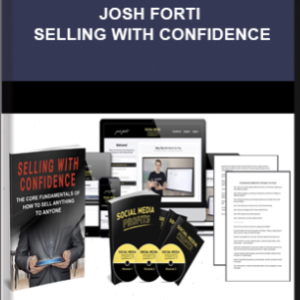Kenneth L.Grant – Trading Risk
$9.00
- Description
Description

Kenneth L.Grant – Trading Risk
Description
Revolutionary methods that merchants can implement to enhance earnings and keep away from losses
No dealer, skilled or particular person, can afford to not have a stable danger administration program built-in into his or her buying and selling system. But discovering a exact mathematical mannequin to exchange subjective decision-making processes is a problem. Traditionally, danger administration has centered solely on loss avoidance, however in Trading Risk, hedge fund danger supervisor Kenneth Grant presents some-thing fully new—the right way to handle a portfolio to reduce danger and enhance earnings by placing extra capital in danger. Trading Risk particulars a danger administration program that may assist each cash managers and particular person merchants consider which parts in a portfolio are working effectively and which aren’t. By illustrating an very simple set of statistical and arithmetic instruments this e-book may also help readers improve their efficiency in lots of monetary markets.
Kenneth L.Grant is Cheyne’s Global Risk Manager, and is the Managing Member for Cheyne Capital, LLC, the agency’s U.S. arm. Mr. Grant is a pioneer within the discipline of hedge fund danger administration and capital allocation. Before becoming a member of Cheyne, he created danger management packages at two of the world’s main hedge funds, Tudor Investments and SAC Capital, the place he was ultimately promoted to the title of Chief Investment Strategist. Mr. Grant holds a Bachelor of Science in Economics and Mathematics from the University of Wisconsin, an MA in Economics from Columbia University, and an MBA from the University of Chicago Graduate School of Business.
Table of Contents
PREFACE.
ACKNOWLEDGMENTS.
CHAPTER 1: The Risk Management Investment.
CHAPTER 2: Setting Performance Objectives.
Optimal Target Return.
Nominal Target Return.
Stop-Out Level.
The Beach.
CHAPTER 3: Understanding the Profit/Loss Patterns over Time.
And Now to Statistics, however First a Word (or More) about Time Series Construction.
Time Units.
Time Spans.
Graphical Representation of Daily P/L.
Histogram of P/L Observations.
Statistics.
A Tribute to Sir Isaac Newton.
Average P/L.
Standard Deviation.
Sharpe Ratio.
Median P/L.
Percentage of Winning Days.
Performance Ratio, Average P/L, Winning Days versus Losing Days.
Drawdown.
Correlations.
Putting It All Together.
CHAPTER 4: The Risk Components of an Individual Portfolio.
Historical Volatility.
Options Implied Volatility.
Correlation.
Value at Risk (VaR).
Justification for VaR Calculations.
Types of VaR Calculations.
Testing VaR Accuracy.
Setting VaR Parameters.
Use of VaR Calculation in Portfolio Management.
Scenario Analysis.
Technical Analysis.
CHAPTER 5: Setting Appropriate Exposure Levels (Rule 1).
Determining the Appropriate Ranges of Exposure.
Method 1: Inverted Sharpe Ratio.
Method 2: Managing Volatility as a Percentage of Trading Capital.
Drawdowns and Netting Risk.
Asymmetric Payoff Function.
CHAPTER 6: Adjusting Portfolio Exposure (Rule 2).
Size of Individual Positions.
Directional Bias.
Position Level Volatility.
Time Horizon.
Diversification.
Leverage.
Optionality.
Nonlinear Pricing Dynamics.
Relationship between Strike Price and Underlying Price (Moneyness).
Implied Volatility.
Asymmetric Payoff Functions.
Leverage Characteristics.
Summary.
CHAPTER 7: The Risk Components of an Individual Trade.
Your Transaction Performance.
Key Components of a Transactions-Level Database.
Defining a Transaction.
Position Snapshot Statistics.
Core Transactions-Level Statistics.
Trade Level P/L.
Holding Period.
Average P/L.
P/L per Dollar Invested (Weighted Average P/L).
Average Holding Period.
P/L by Security (P/L Attribution).
Long Side P/L versus Short Side P/L.
Correlation Analysis.
Number of Daily Transactions.
Capital Invested.
Net Market Value (Raw).
Net Market Value (Absolute Value).
Number of Positions.
Holding Periods.
Volatility/VaR.
Other Correlations.
Final Word on Correlation.
Performance Success Metrics.
Methods for Improving Performance Ratios.
Performance Ratio Components.
Maximizing Your P/L.
Profitability Concentration (90/10) Ratio.
Putting It All Together.
CHAPTER 8: Bringin’ It on Home.
Make a Plan and Stick to It.
If the Plan’s Not Working, Change the Plan.
Seek to Trade with an “Edge”.
Structural Inefficiencies.
Methodological Inefficiencies.
Play Your P/L.
Avoid Surprises—Especially to Yourself.
Seek to Maximize Your Performance on the Margin.
Seek Nonmonetary Benefits.
Apply Liberal Doses of Humility and Humor.
Be Healthy/Cultivate Other Interests.
APPENDIX: Optimal f and Risk of Ruin.
Optimal f.
Risk of Ruin.
INDEX.
Author Information
Kenneth L.Grant is Cheyne’s Global Risk Manager, and is the Managing Member for Cheyne Capital, LLC, the agency’s U.S. arm. Mr. Grant is a pioneer within the discipline of hedge fund danger administration and capital allocation. Before becoming a member of Cheyne, he created danger management packages at two of the world’s main hedge funds, Tudor Investments and SAC Capital, the place he was ultimately promoted to the title of Chief Investment Strategist. Earlier in his profession, Mr. Grant led danger administration efforts for the Chicago Mercantile Exchange and Société Générale. He can be a member of the Board of Directors of the Managed Futures Association (MFA), and is a founding member of MFA’s Hedge Fund Advisory Committee–the business’s main commerce relations group. He is a principal creator of MFA’s Sound Practices for Hedge Fund Managers (2000). Mr. Grant holds a Bachelor of Science in Economics and Mathematics from the University of Wisconsin, an MA in Economics from Columbia University, and an MBA from the University of Chicago Graduate School of Business.
Get Kenneth L.Grant – Trading Risk on tradingcoursezone.com
Kenneth L.Grant – Trading Risk Download, Trading Risk Download, Trading Risk Groupbuy, Trading Risk Free, Trading Risk Torrent, Trading Risk Course Download, Kenneth L.Grant – Trading Risk Review, Trading Risk Review
Related Products
-
-94%
 Add to cartQuick View
Add to cartQuick View -
-91%
 Add to cartQuick View
Add to cartQuick View -
-99%
 Add to cartQuick View
Add to cartQuick View






